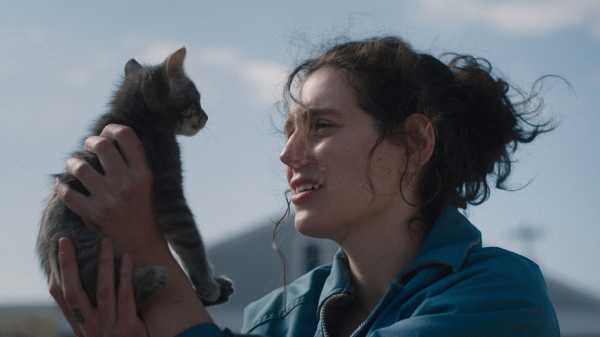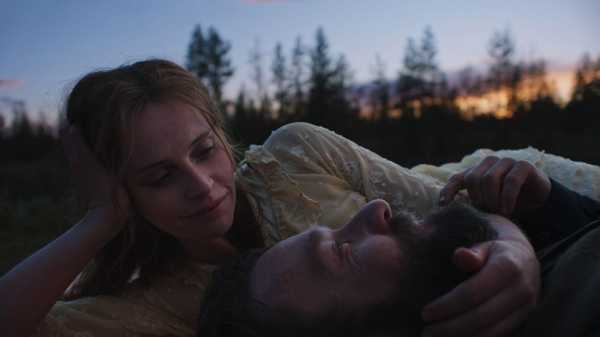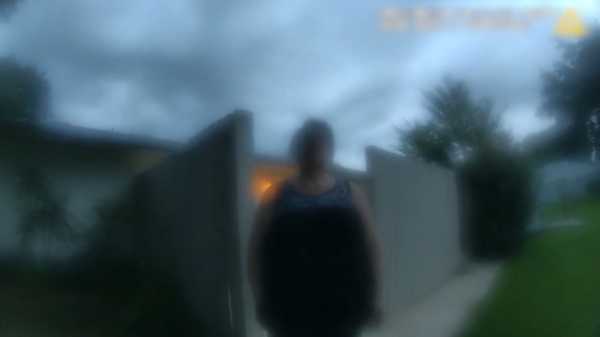
Save this storySave this storySave this storySave this story
The Sundance Film Festival has long established itself as the most important showcase for American independent cinema, piping out work from bold new filmmakers into a fickle, yet potentially receptive, movie-loving world. But, for some of us, its mere mention also conjures sense memories of January in Park City, Utah, the ski-resort town that has served as the festival’s base for almost five decades. The collective store of familiar images, sensations, associations, and rituals includes freezing temperatures and impromptu blizzards; long queues snaking their way through crowded tents; tightly packed shuttle buses bearing their human cargo down icy, traffic-jammed roads; and movie-screening venues so well heated that you rush to divest yourself of padded layers the moment you’ve clawed your way to a seat. And then, after the film has screened, you pad up once more and wander outside, where the air is cold and thin but still substantial enough, it would seem, to enable transmission of that coveted, unquantifiable, often dreadfully misleading thing known as festival buzz.
I’ve been going to Sundance since 2006, but this year I stayed home and watched movies on the festival’s streaming platform, which was launched during the pandemic. The platform is an excellent resource; even so, I was acutely aware of just how inadequate a replacement it is for the actual experience of being on the ground in Park City. More than a few press colleagues, prone to complaining about Sundance as a slushy logistical nightmare, might advise me to thank my lucky stars. But the transporting power of this festival—weirdly enhanced, even, by the not-inconsiderable hassle of navigating it—has always felt inextricable from the transporting power of its movies. A Sundance without Park City, it seems, is no Sundance at all.
And yet, in less than two years, Sundance and Park City will part ways. Last year, it was announced that, starting in 2027, the festival would relocate to a new city, presumably one with more resources and infrastructure to handle the by now enormous influx of festivalgoers. Much of the press coverage at this year’s festival focussed on rampant speculation about where Sundance might end up, and whether the relocation would help rejuvenate an event that has lately been sapped of some vitality by forces including the pandemic, the Hollywood strikes, and the rise of streaming. The festival has confirmed that the search for a new home has narrowed to three possible cities: Boulder, Cincinnati, and Salt Lake City, which, being less than an hour’s drive from Park City, would represent the least disruptive option.
Because not all the Sundance films were made available on the remote-viewing platform, I saw fewer of the offerings than usual. Then again, even those who go in person see only a fraction of the films in any given program. The fact that the festival screens too many films for anyone to see in totality makes the annual push to form snap judgments—good year? bad year? some Zeitgeisty theme perhaps?—seem like the parable of the blind men and the elephant. Having seen only a handful of the eighty-eight feature films that screened this year, I would say I’ve barely managed to stroke the elephant’s whiskers. Still, some of those whiskers were choice, and three films in particular, all of which were acquired for U.S. distribution during the event, struck me as worth putting on everyone’s radar now.
The strongest movie I saw in the festival’s U.S. dramatic competition was “Sorry, Baby,” a quietly remarkable first feature written and directed by the actor Eva Victor. She also gives a strikingly offbeat performance as the film’s protagonist, Agnes, a young professor in the English department of a small-town college. The story unfolds as a series of nonlinear chapters, the first of which finds Agnes hosting a visit from Lydie (Naomi Ackie), a friend and former roommate. The two women haven’t seen each other in some time. There’s an effortless, pick-right-back-up intimacy to their bond, which was forged when they were graduate students at the school where Agnes now teaches. Lydie’s visit also subtly hints at the lingering fallout of something terrible that happened to Agnes during one of those student years—referred to, in one of the movie’s onscreen chapter titles, as “The Year with the Bad Thing.”

Eva Victor, in “Sorry, Baby.”Photograph by Mia Cioffi Henry / Courtesy Sundance Institute
That sounds coy; it isn’t. Trauma may be overworked as a theme and a narrative device, but Victor’s subject here isn’t trauma, per se, so much as the manner in which it is processed, talked about, and not talked about. Agnes and Lydie have developed their own coded, near-wordless language for it; outside that protective bubble, though, the banal rituals and indignities of everyday life can conspire to transform the most private of pain into the most uncomfortably public of spectacles. At the same time, Agnes is never reduced to her anguish; she possesses a natural wit, a tendency toward goofiness, and a brilliant literary mind. Her humor and acuity become an instinctual armor against a world that seldom recognizes, let alone comprehends, what she’s been through. The skill with which Victor pieces together her character’s journey, using dialogue that can veer from the tensely circuitous to the unsparingly direct, was duly recognized by the U.S. dramatic competition jury, which gave “Sorry, Baby” the Waldo Salt Screenwriting Award.
Struggles with long-term loss are also movingly examined in “Train Dreams,” a decades-spanning drama that screened in the festival’s Premières section, reserved for its starriest titles. The star in this case is Joel Edgerton, though his performance here is most notable for its masterly self-effacement; he plays Robert Grainier, a man of robust physicality and few words, who works as an itinerant logger in the Pacific Northwest near the dawn of the twentieth century. Adapted from a 2011 novella by Denis Johnson, “Train Dreams” doubles as a kind of origin story for American infrastructure; one of the film’s secondary strands glances harshly, if a bit cursorily, at the abuses inflicted on Chinese-immigrant railroad workers. Grainier witnesses these and other horrors from a grave yet silent distance. He’s equally reserved about his own joys and sorrows, which come to the dramatic fore once he falls deeply in love with a woman named Gladys (Felicity Jones), marries her, and has a baby daughter. His work keeps him away from home for lengthy stretches, and these recurring absences, the film suggests, are a source of quiet anguish for Robert and his family, even before a larger, more sudden tragedy strikes.
“Train Dreams” was directed by Clint Bentley, from a script he wrote with Greg Kwedar, his regular collaborator. The two have co-written three prior features: “Jockey” (2021), directed by Bentley, and “Transpecos” (2016) and the recently Oscar-nominated “Sing Sing” (2024), both of which Kwedar directed. Their latest collaboration, exquisitely shot by Adolpho Veloso, revels in a oneness with nature that, for all its visual and emotional rapture, has deep sadness at its core. Confronted with shattering loss, Grainier becomes, in one character’s affectionate formulation, “a hermit in the woods.” In his solitude, he experiences recurring dreams and hallucinations that forge a kind of meditative, kaleidoscopic inquiry into his place in the larger world. The result invites obvious yet not inapt comparisons to the work of Terrence Malick, but Bentley’s film—for all its crystalline imagery, its vision of Grainier’s home as a fallen Eden, and its air of metaphysical wonderment—unfolds in a more dramatically direct, compacted register. There’s a narrator here (voiced by Will Patton), and he tells Grainier’s story not in the ecstatically free-form style we’ve come to expect from Malick but in rigorously restrained and quietly wrenching prose.

Joel Edgerton and Felicity Jones, in “Train Dreams.”Photograph by Adolpho Veloso / Courtesy Sundance Institute
In all my years attending Sundance, I can’t remember an experience quite like the one I had with “The Perfect Neighbor,” a standout in the festival’s American documentary competition (where it won a directing prize for its filmmaker, Geeta Gandbhir). Near the end of the movie, there is a stretch of footage that, as it began playing, I realized I had seen before, in a video that had been making the rounds on social media. In the sequence, captured on a security camera, a middle-aged woman named Susan Lorincz sits in a small room at a police station in Marion County, Florida, where she is facing arrest on a charge of manslaughter, after shooting a neighbor dead. Two officers inform her that she has no choice in the matter, and that it would be best for her to let herself be handcuffed, rather than require them to use physical force. Lorincz quietly and persistently refuses: “I can’t do this,” she says, over and over, for what feels like minutes on end, before finally acquiescing. Watching the scene in isolation, I was struck by how thoroughly baffled Lorincz seemed to be facing the logical consequences—or any consequences—of her actions, and also by how gently and patiently the officers dealt with her. I couldn’t help but wonder how they would have treated a nonwhite woman in the same position.
Seen in the larger context supplied by “The Perfect Neighbor,” the scene is no longer simply appalling; it’s utterly damning. Lorincz was arrested in June, 2023, for firing a gunshot through the front door of her home, killing Ajike (A. J.) Owens, a Black woman who lived with her children across the street. Lorincz claimed that she fired in self-defense, which delayed her arrest and spurred a renewed wave of debate around Florida’s controversial Stand Your Ground law. The tragedy was the culmination of long-simmering tensions between Lorincz and several of her neighbors. Since 2021, she had made multiple 911 calls, complaining that Owens’s kids were playing on the grass near her home and accusing them of being noisy, disruptive, and worse. Remarkably, “The Perfect Neighbor” lays out the history of this escalating conflict almost entirely by using footage shot with body cameras, worn by police officers who arrived in response to those calls. Through these reams of footage, brilliantly pieced together by the editor Viridiana Lieberman, a pattern of devastating coherence emerges: with police visit after police visit, Lorincz claims, repeatedly, that she has been the victim of harassment and even violence. The Owens and other neighbors tell a very different story; they’re continually exasperated by Lorincz’s actions and refer to her openly as “the Karen.” Before long, the cops, called back to the neighborhood again and again, come to share their frustration.

A still from “The Perfect Neighbor.”Courtesy Sundance Institute
For all the rawness of its images and the jaggedness of its construction, Gandbhir’s film—and, with it, her argument—unfold with an eerie, almost hypnotic clarity. Whether that clarity should be trusted is a question worth considering. Like the recently Oscar-nominated New Yorker short documentary, “Incident,” in which the director Bill Morrison reconstructs a Chicago police shooting using body camera and surveillance footage, “The Perfect Neighbor” both suggests and exemplifies disturbing new forms and modes of nonfiction storytelling. I was also reminded of Theo Anthony’s nonfiction feature “All Light, Everywhere” (a 2021 Sundance première), which incisively critiques the reliability of body cameras and the degree to which they can be used to prop up a self-serving police narrative.
But if “The Perfect Neighbor” manages to sidestep this critique, it’s because this isn’t a story about police violence. The cops we meet, and whose perspectives we are made to share, seem invariably reasonable, fair-minded, and determined to defuse rather than escalate tensions. Gandbhir’s use of body-camera footage thus has a subversive aspect: she uses it not to reconstruct a crime but, rather, to bring to light the hidden drama of a neighborhood. The simple spectacle of children at play, it seems, is all it takes to transform a patch of American suburbia into a gaping, microcosmic wound of racism, paranoia, aggression, mental illness, and gun violence. But “The Perfect Neighbor” is not—or not entirely—a despairing work. It shows us the strength of support from loving neighbors and concerned cops alike, who come to the aid of Owens and her children before, during, and after the moment of greatest tragedy. The body camera may be a flat, dispassionate observer, but it still sees—and registers—compassion. ♦
Sourse: newyorker.com